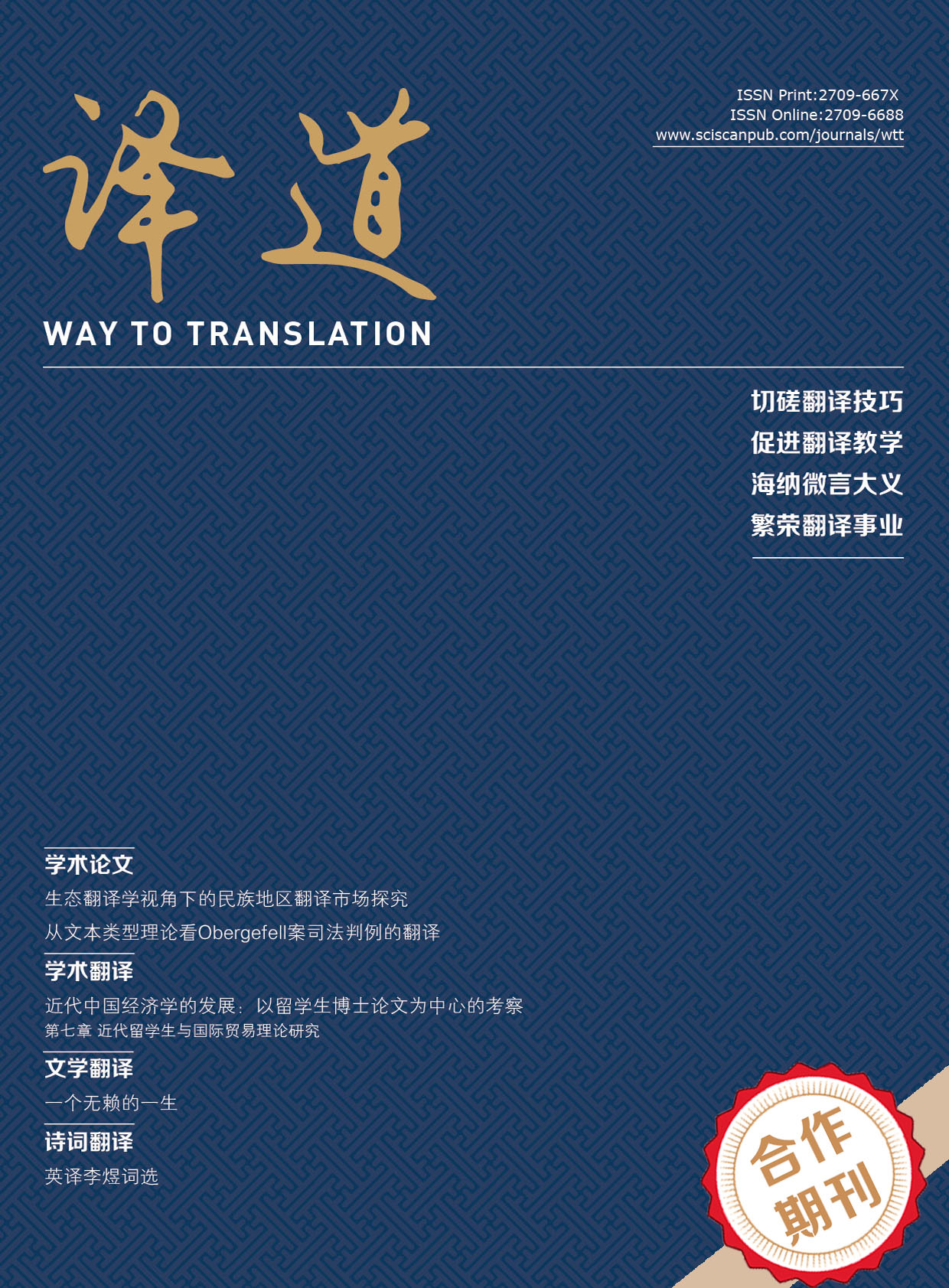Way to Translation
ISSN Print: 2709-667X
ISSN Online: 2709-6688
Contact Editorial Office
Subscribe to the latest published information from SCISCAN
英国汉学家蓝诗玲“变奏式翻译”探微 *
On the Variational Translation Style of Julia Lovell
- Authors: 吕奇 杨锐
-
Information:
湖北大学外国语学院,武汉
-
Keywords:
Julia Lovell; variational translation style; rhythmic tension; reading experience蓝诗玲; 变奏式翻译; 节奏张力; 阅读体验
- Abstract: Rhythmic tension in fiction translation is in essence the translator’s verbal organization to integrate the form and the content of fictional text, which somewhat reflects the stylistic feature as well as the literariness of fiction translation. Julia Lovell, the British sinologist, managed to adjust the rhythm of narrative tension by employing stylistic techniques such as syntactical segmentation and integration, punctuation for stylistic consideration, pseudo-simultaneity and foregrounding of narrator’s voice etc. in translating modern and contemporary Chinese fictions. Consequently, those devices in her translations help to enhance the fictions’ readability, narrativity, literariness and aesthetic value so as to bring the target language readers with better reading experience and more concentration on savouring the finesse of Chinese stories and the charm of Chinese literature. 小说翻译中的节奏张力是译者将文本形式与内容融为一体的言语组织方式的再现,是小说翻译文体特征重要观测点,一定程度体现小说翻译的文学性。英国汉学家蓝诗玲在英译中国现当代小说时采用句段切分 / 聚合手段、注重标点符号的文体考量、借助“假象连动”、凸显叙述者声音等多种“变奏式翻译”处理方式,调节译文叙事节奏张力,有助于提升小说可读性、故事性、文学性和审美价值,令读者增强阅读体验,更多地从文学意义上专注于品读中国故事,感受中国文学自身的魅力。
- DOI: https://doi.org/10.35534/wtt.0103009
- Cite: -
















